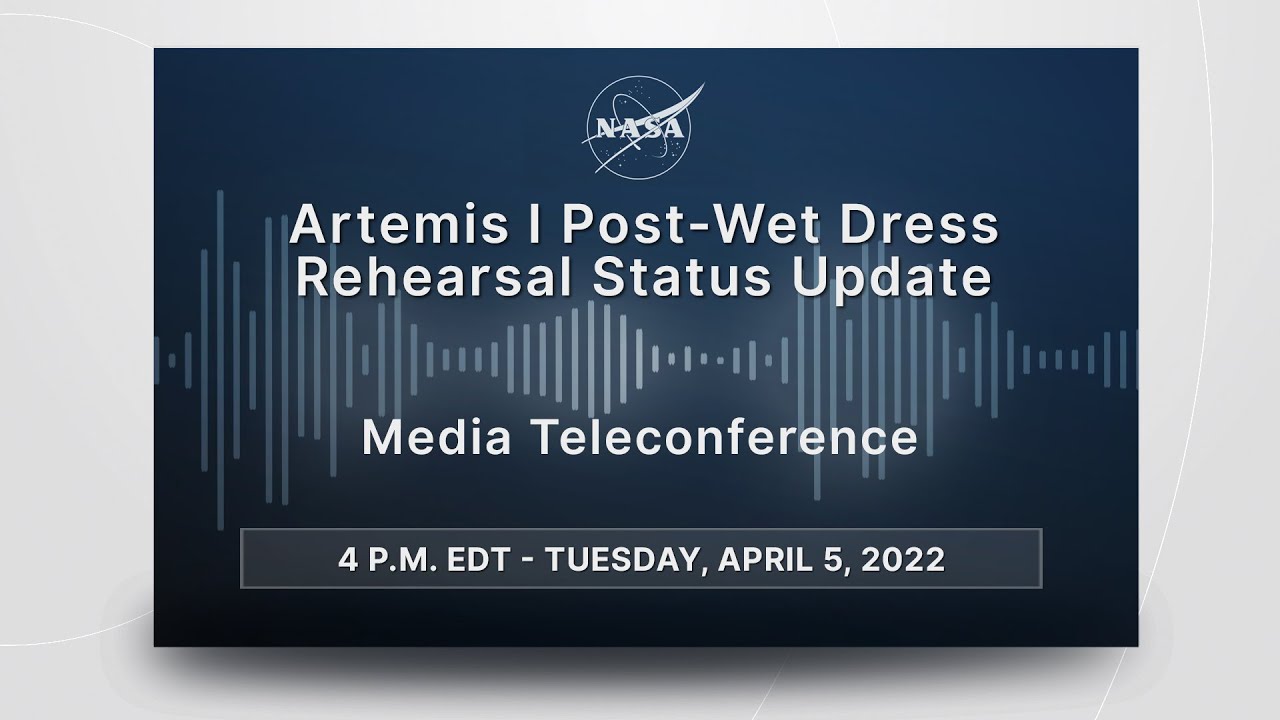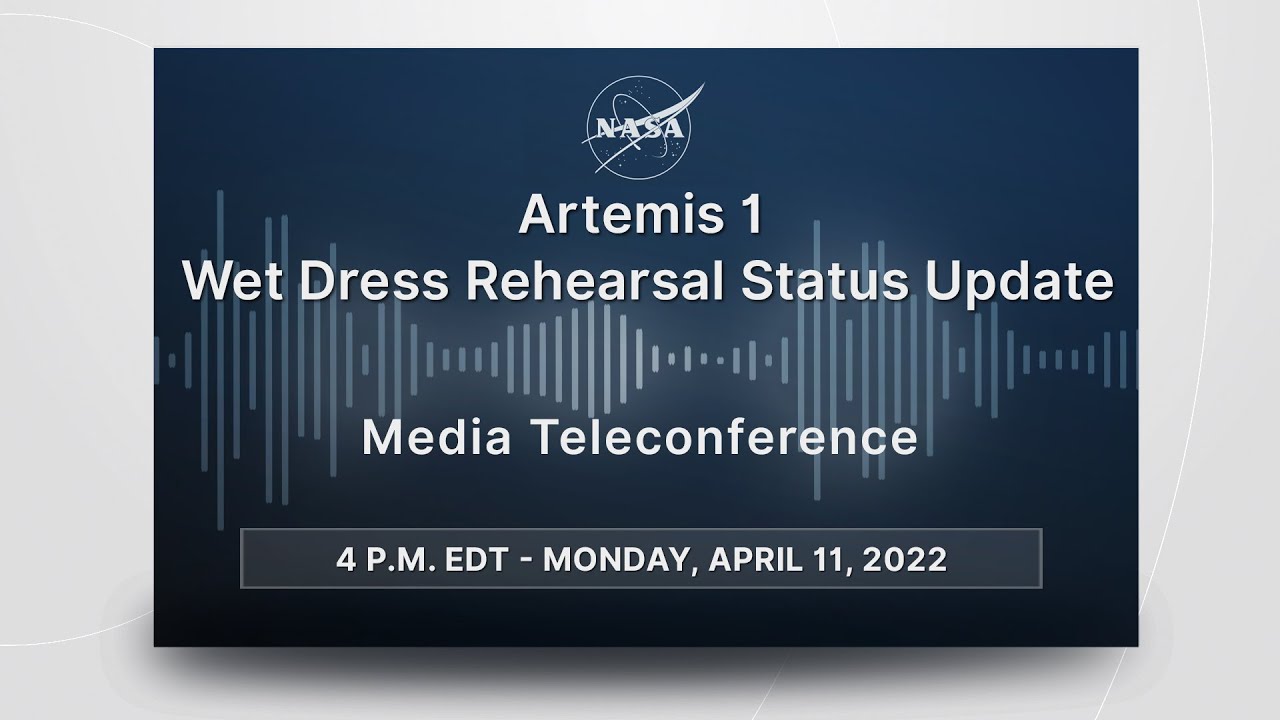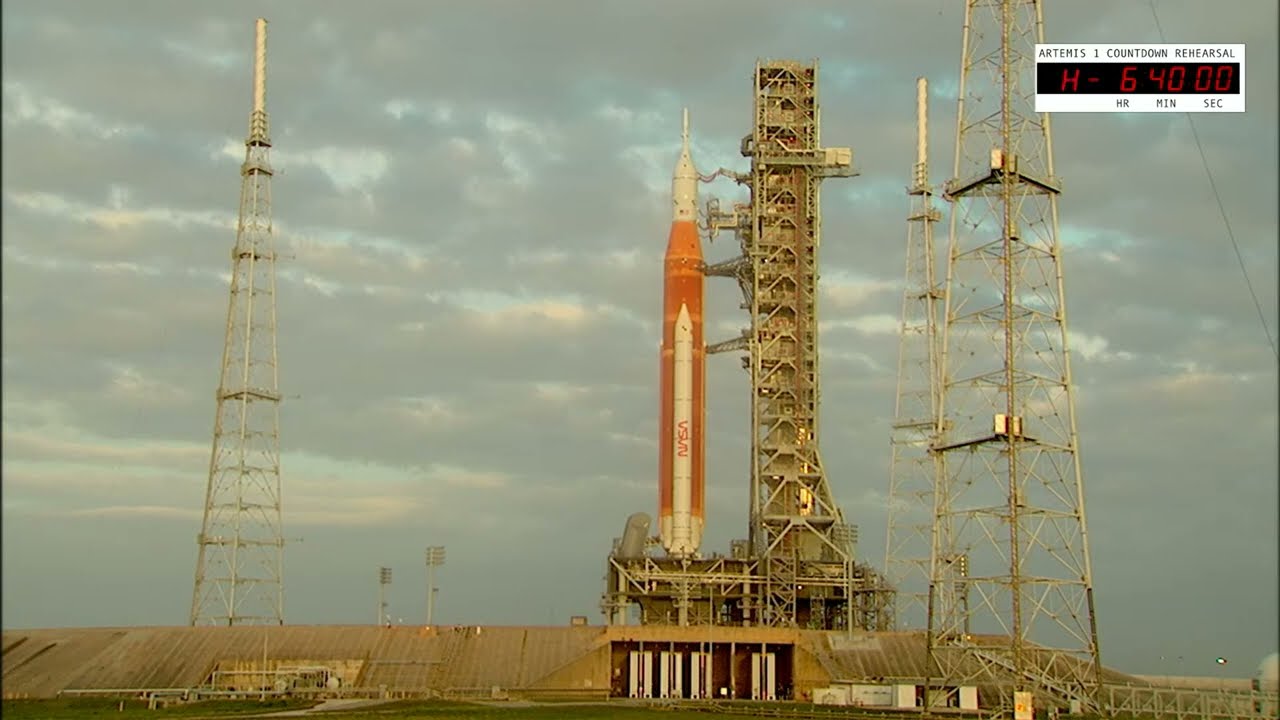UN-flipping-believable! Except, given NASA, I should probably say all too believable.
Bed time here, I’ll leave them to get on with it (or not) sans moi.
“…lot of great learning and progress…”
To be fair, “learning by doing” is a key part of any productive endeavor; next time will be better (we hope).
It occurs that – given the very slow rate at which NASA has been developing this rocket – this may be the first time that many of the staff have ever been involved in a real fueling operation.
After the last two days’ attempts, NASA is standing down from the wet dress rehearsal for the SLS. No date has been set for the next attempt. A media teleconference on status of the test will be held at 20:00 UTC on 2022-04-05. Call audio will be streamed on NASA Live.
During the approximate two-day test known as a wet dress rehearsal, NASA encountered an issue Monday, April 4, with a panel on the mobile launcher that controls the core stage vent valve. The purpose of the valve is to relieve pressure from the rocket’s core stage during tanking. NASA’s launch director made the call to stop the test given the time to resolve the issue as teams were nearing the end of their shifts.
At the time the test ended, the team had loaded about 50% of the liquid oxygen into the Space Launch System rocket core stage. Teams are reviewing range availability and the time needed to turn systems around before determining another attempt to conduct the wet dress rehearsal.
Not a good week for Boeing:
Don’t laugh too hard, John:
Here is the NASA “Artemis I Post-Wet Dress Rehearsal Status Update” media teleconference held on 2022-04-05 (audio only).
The title “Artemis I Post-Wet Dress Rehearsal Status Update” sounds like it involves a play produced by Bill Clinton.
https://twitter.com/NASA/status/1512813673227636736
https://twitter.com/SciGuySpace/status/1512776510876303362
The purpose of a “wet dress rehearsal” is to demonstrate complete fuelling and preparation of the rocket for launch, right down to a moment before engine start. But, as NASA announced in a post today, 2022-04-09, “Artemis I Wet Dress Rehearsal Update”:
Engineers have identified a helium check valve [in the second (ICPS) stage] that is not functioning as expected, requiring these changes to ensure safety of the flight hardware. Helium is used for several different operations, including purging the engine, or clearing the lines, prior to loading propellants during tanking, as well as draining propellant. A check valve is a type of valve that allows liquid or gas to flow in a particular direction and prevents backflow. The helium check valve is about three inches long and prevents the helium from flowing back out of the rocket.
So, due to a detected hardware failure in the second stage, they will completely skip full testing, including fueling, of that stage as part of the rehearsal. The Interim Cryogenic Propulsion Stage was procured from United Launch Alliance and was designed by—wait for it—Boeing.
It’s always a valve. Who is their valve vendor?
The (monatomic) helium molecule is physically about the smallest item around – even smaller than the diatomic hydrogen molecule. And the major challenge with containing hydrogen is one of those real-world issues which are not kosher to talk about in “Energy Transition” circles. In that regard, it is hardly surprising NASA is having a problem with a helium check valve.
What is surprising is choosing helium as the purge gas (as opposed to, say, nitrogen). That may not have been a wise decision. Maybe Hunter Biden promised NASA a good price on Ukrainian helium?
I suspect they’re using helium because they’re purging systems which may have been chilled to liquid hydrogen temperature (≈20° K), where gaseous nitrogen would liquefy (≈77° K).
Helium, either liquid or gaseous, is a challenge to handle but the technology for doing so is completely mature and has been used at industrial scales for more than half a century. The Large Hadron Collider has an inventory of 130 tonnes of liquid helium which is managed through thousands of reservoirs, pipes, valves, chillers, etc. without major problems.
In summary: The wet test is no longer a wet test, but we will continue to refer to it as a wet test.
NASA held another media teleconference on 2022-04-11 to discuss the results of last week’s SLS tests and plans for the second round to begin tomorrow. This is an audio-only recording of the call.
They will, indeed, not fuel the second stage of the rocket and defer fixing the failed helium check valve until the stack is rolled back to the Vehicle Assembly Building around ten days after completion of the current test cycle.
The start of propellant loading was delayed around an hour due to problems with the gaseous nitrogen pipeline which is used to purge the rocket and launcher.
Liquid oxygen loading has been suspended, but the countdown clock is continuing to run.


